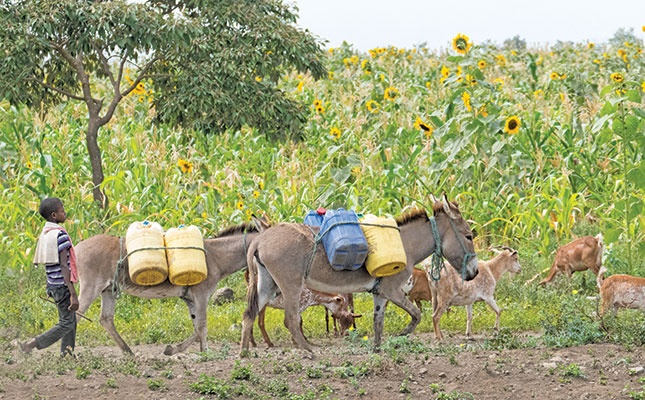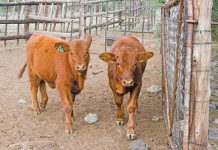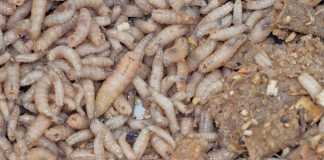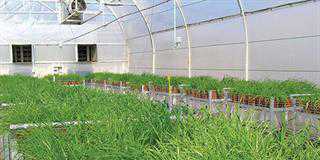
Photo: ssilberman
A recent US government-funded report from National Opinion Research Center at the University of Chicago found that the world’s biggest chocolate companies had failed to achieve key targets set in 2010 to reduce the worst forms of child labour in their West African supply chains by 2020.
According to the report, an estimated 1,56 million children were still involved in cacao-related child labour in Côte d’Ivoire and Ghana in 2019 (down from 2,1 million in 2014), of which 95% were found to be engaged in “hazardous child labour”.
(Cacao refers to the trees and the beans; cocoa, cocoa butter and chocolate are made from the beans.)
A 2010 documentary, The Dark Side of Chocolate, investigated child labour on cacao plantations in Côte d’Ivoire, the world’s largest producer of cacao beans.
The film revealed that apart from these minors being employed illegally under hazardous work conditions, many had been trafficked from neighbouring countries such as Mali and Burkina Faso.
According to the documentary, rural children from Mali, one of the world’s poorest countries, are trafficked to a town or city on the border of Mali and Côte d’Ivoire, then smuggled across the border on motorcycle taxis. Here they are kept until sold to farmers to work on cacao plantations.
The researchers also discovered that children from Burkina Faso could be bought for about €230 (around R4 500) each. This included transport from Burkina Faso and an indefinite amount of work.
Slavery, deceit and lies
Most of the children working on these plantations are not paid, despite being promised wages. The cacao industry in Côte d’Ivoire also remains shrouded in mystery; chocolate manufacturers and government officials deny that children are used as slaves on plantations.
The cacao industry is only one example of extensive child labour in agriculture across the world. According to the Food and Agriculture Organization of the United Nations (FAO), more than 108 million children are victims of child labour in the sector.
Child labour refers to work that is mentally, physically, spiritually, socially or morally dangerous and harmful to children. It interferes with compulsory schooling, engages children below the national minimum age of employment, and/ or can be considered hazardous.
If only one of these attributes is present, the work may be considered child labour. The FAO states that a child has a right to be allowed to play, attend school and be cared for, and this is the responsibility of the child’s parents/guardians and community, as well as society and government.
Socio-economic factors
While there is a concerted push by many international organisations to end child labour, powerful socio-economic pressures remain. The FAO lists the following key socio-economic factors as responsible for the continuance of child labour in agriculture.
Until these are sufficiently dealt with by policymakers, the organisation states, child labour is likely to continue as a mainstay of agricultural labour in the world’s poorest communities.
Limited technology and inadequate practice
Agriculture has become more and more competitive over the years. To compete on the global market, or even locally, farmers and agro-processors have to produce more with less.
But in poorer countries where technology is expensive and education poor, the adoption of technology is more difficult, and farmers and processors may require more labour to speed up production. As there may not be enough adult labour available, or employing more adults is too expensive, they often rely on children.
- Poverty and food insecurity
These are both the main causes and consequences of child labour. In many rural areas, children work for their survival. Parents may also depend on their children to provide labour to help the family afford food, clothing and shelter. - Invisibility of child labour
Most children work as unpaid family workers, and their employment may thus be kept hidden. This is largely facilitated by the limited reach of labour inspectors in rural areas, or, as seen in the cacao industry in Cote d’Ivoire, the buy-in of government and other official authorities. - Limited availability of quality education in rural areas
Good education may be inaccessible in poorer communities due to the cost of school fees, transport and other factors. Moreover, as most work in agriculture is seasonal, many seasonal labourers move from their homes to the farms when their labour is required. This means that their migratory lifestyles conflict with school schedules.
In addition, many of these parents have little or no education themselves and may not appreciate the value of schooling.
This is compounded by the fact that even those who have completed their schooling may still be employed in low-level jobs; because of this, the parents of these children may not see the point of formal education, and may want their children to learn practical skills, such as farming, from a young age.
- Culture and tradition
Parents may prefer their children to follow in their footsteps. In this case, formal education may be seen as irrelevant.
Hazardous work
It is important to distinguish between child labour, appropriate labour for children, and youth employment. Many children who grow up on farms are involved in some form of labour; this does not mean that the work they do should automatically be considered child labour. The child’s age, the work’s impact on his or her education, and the nature and conditions of the work are all distinguishing criteria.
According to the International Labour Organization (ILO), children over the age of 13 can carry out light work. In many countries, and as per the ILO, the general minimum age for work is 15. However, hazardous work may only be done by persons over the age of 18; children/minors (under the age of 18) may not perform hazardous tasks. Moreover, as mentioned before, work must not interfere with compulsory schooling.
Agriculture is considered one of the world’s most dangerous work environments. As children are still growing, they tend to be more vulnerable to these hazards, which may have a direct influence on their growth and development, or even endanger their lives. It is estimated that 71% of children working in agriculture are involved in hazardous work of some form or other.
Hazards in agriculture include the following:
- Long working hours;
- Carrying heavy loads over long distances;
- Extreme temperatures;
- Dangerous cutting tools;
- Injury or death from using machinery;
- Handling toxic pesticides;
- Exposure to organic dust;
- Injury or death from falling;
- Injury or death from working with livestock.
In terms of handling toxic pesticides, for example, children have a greater capacity than adults to absorb these toxic substances, which may cause nerve damage and other health problems.
It is important to distinguish between risks and hazards; doing so makes it easier for farmers and landowners to mitigate and lower risks. Hazards are dangerous by nature and indicate the potential to harm the health or safety of a person.
Risk indicates the probability of harm and is an indication of the potential extent of the harm, including the long-term consequences. For example, a pesticide is a hazard, as it is toxic in nature, but spraying pesticide is a risk, which depends on the measures implemented to manage that risk.
Not all risks are immediately obvious. In the case of youth employment, the health effects of repeated chronic exposure to a hazard over weeks, months or years should be considered, as even low levels of exposure or seemingly low-risk activities can be harmful over years.
Breaking the cycle of poverty
Child labour often results in children remaining in unskilled, poorly paid jobs into adulthood and thus being unable to break the poverty cycle.
As child labour is a consequence of poverty and a lack of employment opportunities, it is unlikely that the tide will change until adults in poor communities are offered decent education and greater access to improved employment opportunities. Policymakers need to push for decent education and school participation, as well as improved health care, in these communities.
This will also ensure that they have increased capacity to innovate and manage resources.
Moreover, policymakers need to ensure that the practice of child labour is banned, and that this is enforced across rural areas. It is also important that adults in these communities be taught about the importance of ensuring that their children receive a good education. Until education in these areas improves, it is unlikely that child labour will decline.
While it is the responsibility of government to provide quality education and enforce laws, every farmer can make a difference in the lives of rural children. This means enforcing child labour laws on his/her own land by ensuring that children do not work in hazardous conditions and continue to attend school. Farmers could also implement measures to reduce risk, such as ensuring that children feeding animals, for example, do so under adult supervision.
While these actions may not eradicate the broader problem of child labour in agriculture, they will make a direct difference in the lives of the children on these farmers’ lands and may help them escape the poverty trap.










